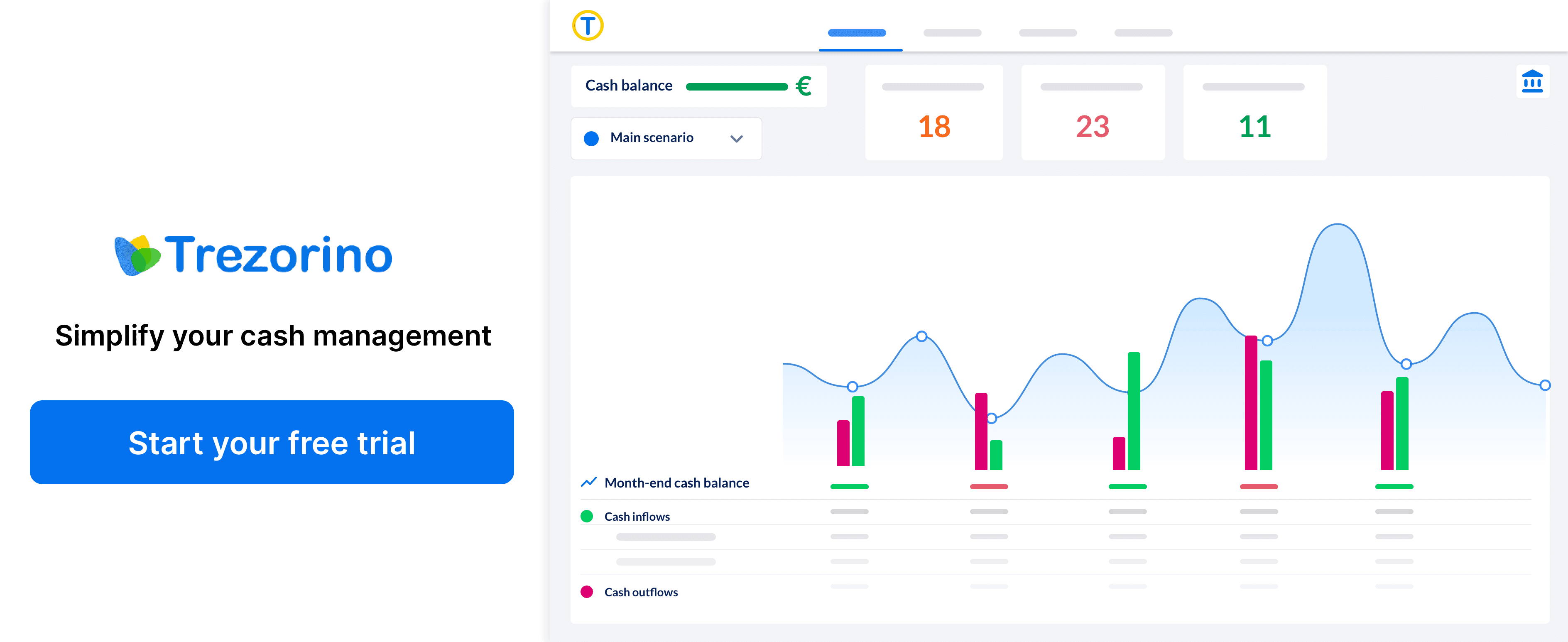Cash Flow Financing Activities: Definition, Activities, and Formula


Cash flow financing activities is a recorded data of how the money moves in the company and its owners. It contains the data on how the money will be processed into three categories, equity, debt, and dividend. For instance, cash flow financing activities will keep track of the debts that a company must be able to pay; thus, the company will be able to pay them on time. Another example is dividends, where the shareholders may be paid if the company’s funds exceed or the board of directors allows it. Cash flow financing activities are very important as they are the basis of the business's where to put the money and what the money’s purpose will be in the company.
What is Cash Flow Financing Activities?
Cash flow financing activities simultaneously track both the capital and the payments needed to be settled by the company. It is a detailed record that does provide the data for every flow that the money has gone into. Cash flow financing activities help the company to stay on track despite the complex in and out processes of money within the company. Without cash flow financing activities, the company would not know where to put the funds that they intended to use, making the business prone to failure.
What are included in cash flow financing activities?
Cash flow financing activities are divided into various subcategories which provide different sets of data. These subcategories are what make a business run very well. It starts with the raising of capital for purchasing and repayments. Hence, without the existence of these, a business will most likely experience a loss of capital and revenue.
Listed below are the different types of cash flow financing activities.
1. Issuance of equity: Issuance of equity is where the raising of capital starts. It sells a portion of its shares and rights to investors in exchange for money and assets.
2. Repayment of equity: Repayment of equity is where the revenue goes; however, with the decision of the board of directors. When the repayment of equity has been chosen, the return of the investment will be reinvested to maintain the business.
3. Payment of dividends: A company must make a payment of dividends if it opts to bring back the money invested by its shareholders. The scenario will be that the shareholders will either lose their shares or they might be decreased depending on the amount that has been paid.
4. Issuance of debt: Issuance of debt is another strategy of a business to gain capital via borrowing money. It does not sell any portions or rights of the company, but it will have an obligation to pay monthly or annual cash to a bank or another lending company.
5. Repayment of debt: Repayment of debt refers to the returning of money owed by a company from another company or bank. It may be set on a monthly, quarterly, or annual basis. The interest rate also differs according to the signed agreement.
6. Capital lease obligation: Capital lease obligation is the charges gained by an asset through leasing. A business owner who opts to lease an asset that is helpful to the company must pay the charges indicated in the contract signed by the two parties.
1. Issuance of equity
Issuance of equity is the company’s activities to sell its shares, either through private or public means, to gain capital. The capital will be used to run the business as it will be utilized for but not limited to, purchasing of equipment; developing the business itself, and investments. Once the equity has been sold, the buyer will now be part of the company’s shareholders and have ownership rights to the business. Issuance of equity does not just make the business run, but it also makes it expand and helps it become bigger. When a business is doing great, a lot of investors may want to purchase equity, so a business will have more capital.
2. Repayment of equity
Repayment of equity means that the money used for capital will be taken back as capital again once the business has already generated an income. Although it will not be totally considered as repayment as there are no obligations to be settled, unlike debt. The equity must still be funded back in order for the business to prosper and the shareholders' equity to grow. The return of money will fall under two categories, whether to reinvest it or to pay it all back to the shareholders, which is called the payment of dividends. The repayment of equity means reinvesting the money to repay it as capital to fund the business.
3. Payment of dividends
Dividends are the returned money from running a business, which will be paid to its investors or shareholders. As what is discussed above, the equity makes the capital for a business by selling its shares to investors. If the company, specifically, its board of directors chose not to pay the return into the equity, then it will be payment of dividends instead. The payment of dividends is also possible when there are excess funds that the company will use to repay its shareholders. After the repayment, the shareholders may entirely lose their shares and rights in the company, or they will have less.
4. Issuance of debt
Issuance of debt refers to the plan and request of the company to borrow money from banks or other companies. The purpose of borrowing money is to raise capital to fund business operations and investments. The disadvantage, however, of raising capital from debt is its accompanying obligations, which include monthly payments and interest. The advantage, on the other hand, is that it does not sell a portion of the business to other people. The board of directors will be deliberating the issuance of debt as its obligations may negatively affect the business itself.
5. Repayment of debt
Repayment of debt refers to the monthly, quarterly, or annual payments of the amount owed by the company to the bank and other businesses. The issuance of debt will be approved, and the company will be borrowing money from banks and other companies. The debt will be used to run the business and fund its operations. The returns from the operations must exceed the outstanding capital or the specified date of payment of the long-term debt in order for the company to repay it. Failure of the business to achieve the intended return will result in an inability to pay.
6. Capital lease obligation
A capital lease obligation is the amount of interest that has been generated by assets. Through leasing an asset, whether in the form of physical property or cash, the owner will receive income from the debtor because of the agreed interest that will be charged depending on the specified date. It is sealed by a contract that will only end after its expiration. The debtor must be able to pay and comply with the necessary requirements; otherwise, it will be considered a breach of contract.
What is an example of cash flow from financing activities?
An example of cash flow from financing activities is selling a company’s shares and using them as capital for business operations. A business won’t run if it does not have money to use in the first place. Thus, a business will sell some of its shares and rights to other people to use their money, and that makes these people shareholders, who can participate in the business's future decisions. The cash flow from financing activities will then be monitored and tracked to see where the money is going to be spent, how much it will return, and how it can be applied.
How to calculate cash flow financing activities?
To calculate the cash flow financing activities, the cash inflows from issuing cash equity or debt (CED) will be deducted from the summed amount of cash paid as dividends (CD) and repurchase of debt and equity (RP).
Listed below is the formula for cash flow financing activities.
CFF= CED - (CD + RD)
What does positive cash flow from financing activities mean?
Positive cash flow is when the business’ income is greater than its expenses. However, "what is positive cash flow?” in layman’s terms. It literally means that the business is stable, and its operations are being regulated properly. The capital that has been invested is now accepting bigger returns. Thus, the outstanding debt balance, payment of equity, and payment of dividends will be paid accordingly without even sacrificing the company’s current status. Positive cash flow is the main indicator that a business is doing well in its investments. Through a positive cash flow, the amount of assets is also expected to grow.
What does negative cash flow from financing activities mean?
A negative cash flow refers to the company’s activities that do not give a return on the invested capital at a particular point in time. Instead, the capital itself is now being used to compensate for the debt, repay equity, and pay the dividends back to the shareholders. Thus, the business is now suffering from the negative effects of failed investments and delayed returns. With negative cash flow from financing activities, the business is prone to bankruptcy. However, a negative cash flow from financing activities also means that a company is funding a bigger investment, which requires in-depth research and large development projects that will boost its revenue. Thus, the question “what is negative cash flow?" has now been answered.
What is the difference between cash flow investing activities and cash flow financing activities?
The Cash Flow of Investing Activities is a company’s data that directly projects how much cash has been used from the investment at a certain point in time. These activities include, but are not limited to, purchasing long-term assets, including investments in securities and physical assets. The capital and expenses are all coming from the investment itself. There are no debts or sold shares. Meanwhile, the cash flow financing activities are a set of data that contains the capital’s source and the revenue’s destination. One example of the capital’s source is debt, or borrowing money. The destination of the income, on the other hand, is to pay the debt, which is used to run the business. Both have been defined and compared to each other; thus, the question, “What are cash flow investing activities?” must not be confusing from now on.
